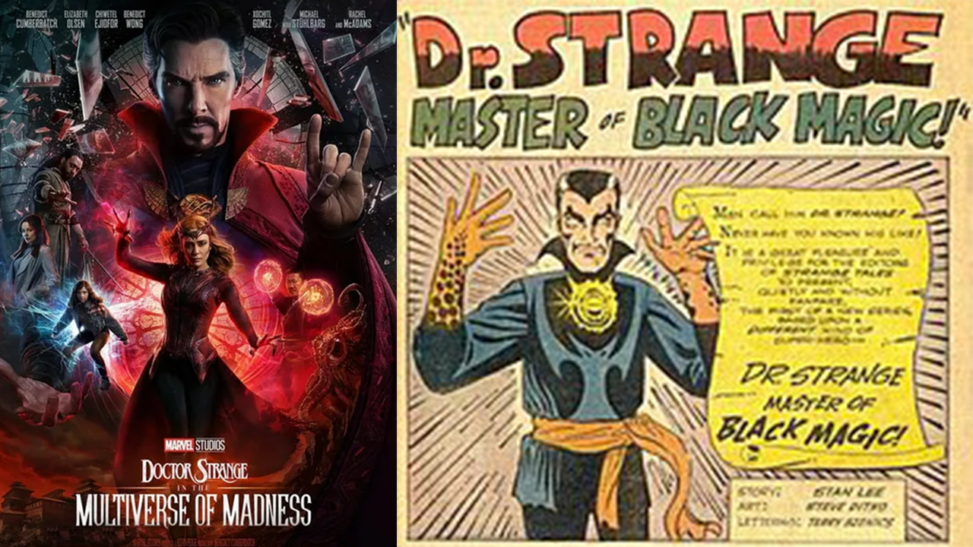Doctor Strange, a character born from the minds of Stan Lee and Steve Ditko in 1963, has captivated audiences with his journey from arrogance to enlightenment. As the Sorcerer Supreme, he embodies the fusion of science and mysticism, undertaking the responsibility of protecting reality itself. Across various adaptations, Doctor Strange’s portrayal has evolved, reflecting changing societal norms and cultural interpretations. This essay will delve into the character’s significance, attributes, gender constructions, societal expectations, psychological impacts, and changes in depiction over time.
At the heart of Doctor Strange’s story is a focus on transformation and redemption. From his origins as a brilliant yet cocky neurosurgeon to his role as the Sorcerer Supreme, Strange’s journey symbolizes the universal quest for personal growth and enlightenment. His dedication to mastering the magic arts and defending the world against evil threats underscores themes of sacrifice, duty, and the pursuit of knowledge. Through his evolution, Doctor Strange emerges as a symbol of resilience and heroism, inspiring audiences to embark on journeys of self-discovery.
A rich tapestry of masculine and feminine attributes defines Doctor Strange. While his intellect, power, and assertiveness align with traditional notions of masculinity, his capacity for empathy, intuition, and emotional growth challenges conventional gender stereotypes. By transcending rigid gender roles, Doctor Strange offers a more nuanced and inclusive representation of masculinity. His ability to balance strength with compassion exemplifies a progressive vision of gender, inviting audiences to reconsider their perceptions of masculinity and femininity.
The portrayal of Doctor Strange in media fosters expectations of multifaceted masculinity, encouraging individuals to embrace the full spectrum of human experience. By rejecting narrow stereotypes and celebrating diversity, audiences can explore their identities beyond traditional gender norms. This inclusive representation promotes self-acceptance, enriching personal relationships and societal communication. As audiences continue to engage with diverse representations of masculinity, the legacy of Doctor Strange serves as a reminder of the transformative power of storytelling in shaping cultural perceptions and individual beliefs.
Throughout his evolution, Doctor Strange’s depiction has been influenced by cultural changes and societal shifts. In contemporary adaptations, there is a greater emphasis on inclusivity and diversity, reflecting changing attitudes towards gender and identity. Additionally, technological advancements allow for more dynamic storytelling, enabling a more profound exploration of the character’s psyche and motivations. These changes highlight the character’s enduring relevance and adaptability, resonating with audiences across generations while reflecting the evolving landscape of media representation.
Doctor Strange’s journey from his origins as a flawed yet formidable hero to his modern interpretations embodies the evolving nature of gender norms and societal expectations. By challenging conventional stereotypes and embracing diversity, the character inspires audiences to redefine masculinity and femininity. As society continues to progress, the legacy of Doctor Strange reminds us of the importance of inclusivity and authenticity in fostering positive self-esteem and interpersonal relationships. In the ever-changing landscape of media representation, Doctor Strange stands as a beacon of hope and empowerment for generations to come.
Bibliography:
Pratiwi, Desa Putu Eka, I. Komang Sulatra, I. Made Agus Wibawa Putra, and Saya Nagao. 2023. “Examining the Linguistic Characteristics of Female Main Characters in the Movie ‘Doctor Strange in Multiverse of Madness.’” 6th International Conference on Sustainable Development, 50–57. https://ejournal.unmas.ac.id/index.php/journal/article/view/15/7.
Pratiwi, Desa Putu Eka, I. Komang Sulatra, I. Made Agus Wibawa Putra, and Saya Nagao. 2023. “Examining the Linguistic Characteristics of Female Main Characters in the Movie ‘Doctor Strange in Multiverse of Madness.’” 6th International Conference on Sustainable Development, 50–57. https://ejournal.unmas.ac.id/index.php/journal/article/view/15.
Hapsari, Ni Putu Ayu Mitha, and Ni Putu. “The Characters and Conflicts in Marvel Studios “Doctor Strange” Movie.” (2018).


Alex Fallowfield
While the work still talks about both aspects, I would’ve liked to see more analysis on the differences or similarities between the comic book and movie versions of Doctor Strange. There is a lot of vague connections between the two just would have liked a few more specific details about the changes he’s undergone. I liked the choice to choose a character who goes against the typical ‘super-body,’ and a design that isn’t focused on sexuality (hyper feminine or masculine). I can’t speak for what the professor will think about the choice to write about a character that highlights the lack of gendered stereotypes connected to it, but I personally think it shows a good understanding of the topic to know and highlight when there is an absence of key characteristics. There was great description of Doctor Strange himself, including his backstory, his superpowers and how he goes against stereotypical gender norms.
My biggest critique of the whole paper would be the lack of sources used in text. While I have no doubt that all the information written is factual and comes from a good source, there is no in-text citations telling the reader where you got the information from. This also means there was no use of quotes, and while it is not required to fill the paper with quotes, it adds a lot of validity to your claims if you use someone else words to enhance your own.
The connection of the pictures to the work is good, however I would have preferred if the movie image of Doctor Strange wasn’t just the movie’s poster. A picture that Doctor Strange’s full body would’ve made a stronger connection to the fact his design lacks gendered stereotypes, because all we can see currently is his head and left hand.